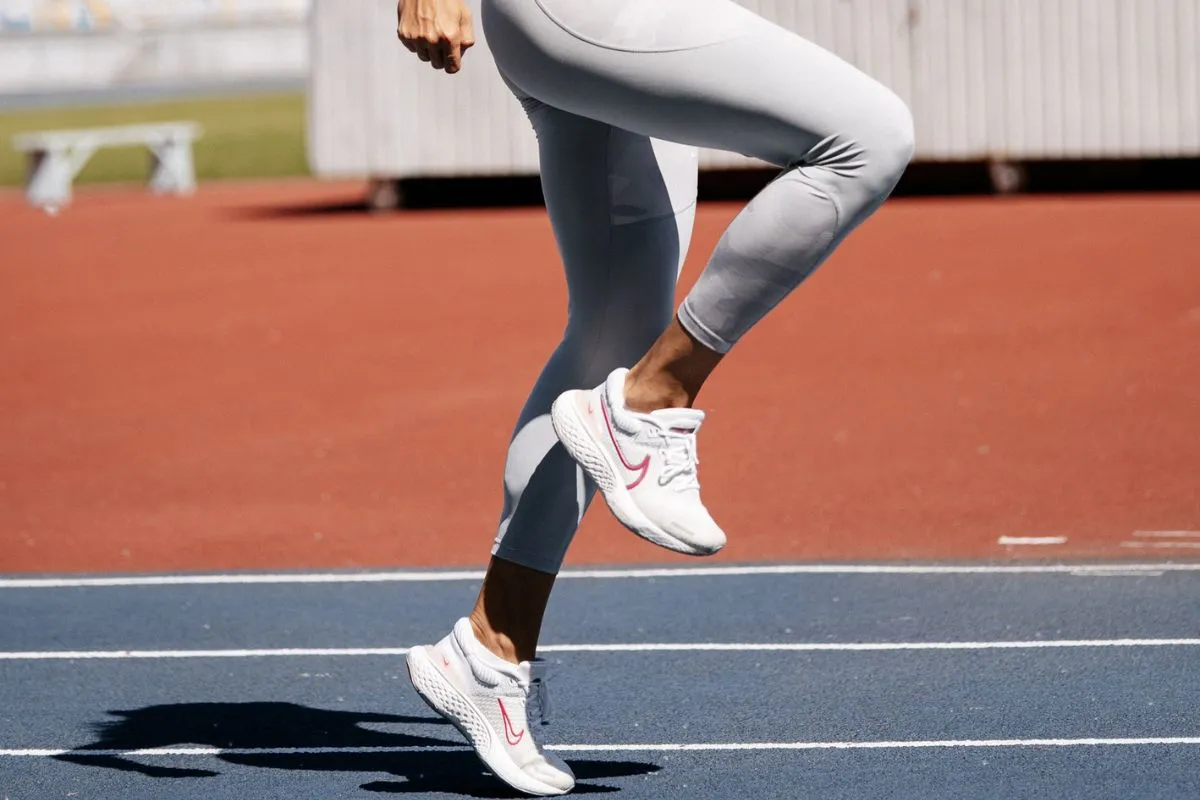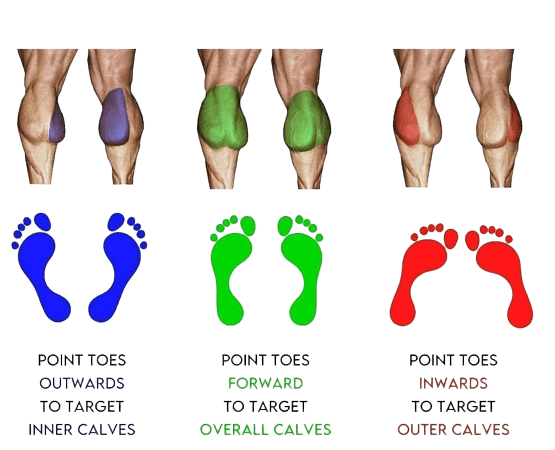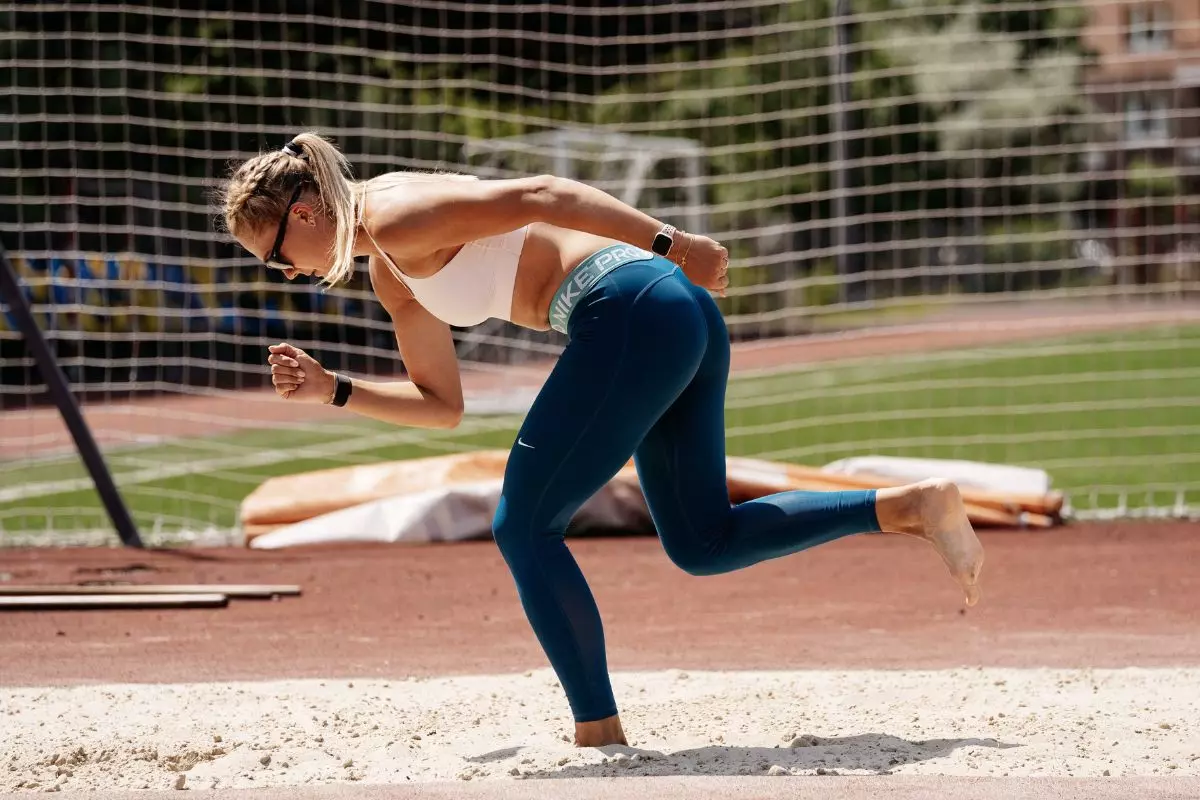Does Running Build Calves? 3 Exercises + Tips to Pump Calves
Does running build calves? This question is a common one among fitness enthusiasts. In this article, we uncover if running helps build calves and gain insights into effective strategies to maximize your calf-building potential.
does running build calves?
Absolutely! Running is an excellent activity for building calf muscles. The continuous motion and impact involved in running works the calf muscles extensively, leading to their growth and improved strength.
Calf Structure and How Running Affects the Formation of the Calves
The calf muscles play a crucial role in running and are essential for the overall stability and propulsion of the lower legs. They are made up of two main muscles: the gastrocnemius and the soleus. The gastrocnemius is the bigger muscle, and the soleus lies underneath it. These muscles connect to your heel bone through the Achilles tendon, which is a strong band of tissue.
When you run, your calf muscles work hard to help you move. As you push off the ground with each step, your calf muscles contract and create force, propelling you forward. Doing this over and over again when you run can make your calf muscles bigger and stronger. That’s why some runners have well-developed calves that you can see and feel.
So how does running make your calves bigger? Regular running, especially if you do sprints or run uphill, can help your calves get bigger and stronger. The high-intensity nature of these activities puts a lot of stress on your calf muscles, and they respond by growing and adapting to handle the demands. However, it’s important to remember that genetics, how hard you train, and how often you engage in training sessions can also affect how much your calf muscles grow.
It’s not just about how your running calves look, though. The muscles in your lower legs, including your calves, play an important role in absorbing the impact when your feet hit the ground while running. They help to reduce the risk of injuries and also contribute to your overall running performance and efficiency.
3 Benefits of Running for Building Calf Muscles
When it comes to building calf muscles, running has several advantages. Let’s take a closer look at how running can build calf muscles:
1. Muscle Activation and Endurance
Running actively engages the calf muscles, as they play a crucial role in propelling your body forward with each stride. This repetitive motion helps activate and strengthen the gastrocnemius and soleus muscles. Regular running gradually improves muscle endurance, allowing your calves to handle more prolonged periods of exertion.
Pro Tip:
Calves play a crucial role in running as they are smaller and fatigue less quickly. That’s why many athletes focus on them to engage the larger muscles less, which are primarily needed for acceleration rather than endurance running.
2. Muscle Hypertrophy
Running can stimulate muscle hypertrophy, which refers to the growth and enlargement of muscle fibers. While running primarily focuses on endurance and cardiovascular health, incorporating high-intensity sprints or hill sprints into your running routine can encourage greater muscle growth in your running calves. These intense bursts of speed put additional stress on the calf muscles, leading to tiny tears in the muscle fibers. As the body heals these microtears, the muscles get bigger and stronger.
3. Lower Body Strength
Running is a weight-bearing exercise that places significant demands on the lower body muscles, including the calves. The repetitive nature of running helps strengthen not only the calf muscles, but also the surrounding muscles like the quadriceps, hamstrings, and glutes. Strengthening these muscle groups collectively improves stability, balance, and overall lower body strength.

3 Disadvantages of Running for the Calves
While running can be a great way to stay fit, it is important to be aware of potential disadvantages and risks associated with certain running techniques. Let’s explore some of the disadvantages of running for the calves.
1. Increased Risk of Calf Injuries
You might have felt your calves burn when running. When you rely heavily on your calf muscles while running, you put excessive stress on them, which can increase the risk of calf injuries. The calves play a crucial role in absorbing the impact of each stride, and overworking them can lead to conditions like calf strains, flexibility imbalances, or even calf tears. These injuries can be painful and may require time off from running to heal properly.
2. Limited Efficiency and Endurance
Running primarily targets the calf muscles, placing a significant demand on them. However, it does not fully engage or develop other important muscle groups, such as the quadriceps. Neglecting these muscles results in muscular imparity which may lead to decreased running speed and endurance. Engaging larger muscle groups, such as the glutes and quadriceps, can help distribute the workload more efficiently and improve your running performance.
3. Limited Muscle Development
While running can strengthen and tone the calf muscles to some extent, it’s not an effective way to build substantial muscle mass. Engaging various muscle groups, such as the quadriceps, hamstrings, glutes, and hip flexors, helps in building overall muscle mass and strength. Neglecting these muscle groups can result in muscle strain and fatigue, which may hinder your running performance and increase the risk of injuries.
Subscribe to Our Running Newsletter!
Get free running tips from renowned professional athletes and discounts from top-notch brands.
Does Running Help Build Calf Muscles?
So, does running help build calves? Running primarily targets the larger calf muscle, called the gastrocnemius. This muscle is visibly noticeable and gets activated when you push off the ground with each stride. The repetitive activation and contraction of the gastrocnemius during running can help strengthen and develop the muscle fibers, resulting in increased muscle mass and definition in the calves.

Pro Tip:
Varied terrain strengthens our feet and calves. By simply running on different surfaces without even performing specific exercises, we can strengthen these muscles.
However, it’s important to understand that relying solely on running may not lead to significant calf muscle growth, especially if you’re aiming to build substantial mass. The calf muscles consist mainly of slow-twitch muscle fibers, which are more oriented towards endurance. These fibers are less likely to grow in size compared to the fast-twitch muscle fibers found in other muscle groups.
It is best to include extra workouts that target the calf muscles specifically if you want to maximize calf muscle growth. Calf raises (done both standing and sitting down) and other resistance workouts, such as weighted calf raises, jumping exercises, and hill sprints, are beneficial. A more thorough stimulation for muscle growth can be achieved by including calves-specific strength training routines.

3 Ways to Improve Calf Development with Running
Strong and well-developed calf muscles not only contribute to better overall lower body strength, but also enhance athletic performance and reduce the risk of injuries. If you’re wondering how does running grow calves, here are some tips to help you achieve your goals.
1. Gradual Progression
One of the key factors in improving calf development with running is a gradual progression. Start by incorporating shorter running sessions into your routine and gradually increase the duration and intensity over time. This allows your calf muscles to adapt to the stress and load placed on them. Don’t forget to stretch your calves before and after running to minimize the risk of injuries.
2. Hill Training
Incorporating hill training into your running routine is an excellent way to target and strengthen your calf muscles. Running uphill requires more effort from the calves, as they work harder to lift your body weight against gravity. Start with shorter uphill intervals and gradually increase the duration and intensity as your calf muscles become stronger.
3. Interval Training
Interval training involves alternating between periods of high-intensity running and active recovery. This type of training not only boosts your cardiovascular fitness, but also engages your calf muscles in a dynamic way. For example, you can incorporate short sprints during your run, followed by a slower jog or walk to recover.
3 Best Calf Exercises for Runners
Many fitness enthusiasts wonder, ‘Does running build leg muscle?’ as they seek to strengthen their lower body through aerobic exercise. Unfortunately running predominately promotes only a handful of muscle growth in the lower body. However, incorporating specific calf exercises into your training routine can help build your leg muscles efficiently. Here are some of the best calf exercises for runners:
1. Calf Raises
- Find a step or raised surface and stand on it with the balls of your feet. Let your heels hang off the edge.
- Slowly raise your heels as high as you can while keeping your body straight and engaging your core.
- Hold the raised position briefly, then lower your heels back down.
- Repeat this movement for the desired number of repetitions.
2. Toe Raises
- Stand with your feet flat on the ground, shoulder-width apart.
- Lift your toes off the ground while keeping your heels firmly planted.
- Hold the raised position briefly, then lower your toes back down.
- Repeat for the desired number of repetitions.
3. Skipping
- Stand with your feet hip-width apart.
- Begin hopping off the ground, alternating your legs as if you were skipping.
- Use your calf muscles to push off and propel yourself upward with each hop.
- Continue skipping for a set distance or duration.
Frequently Asked Questions About Does Running Build Calves
Are Calves the Hardest Muscle to Grow?
Growing running calves can be challenging for many individuals. The calves consist of dense and stubborn muscle fibers, which can make them one of the toughest muscles to develop. While factors like genetics play a role, a combination of targeted exercises (such as calf raises and calf presses) and progressive overload training can help stimulate calf muscle growth.
Does a High-Incline Treadmill Build Calves?
Engaging in high-incline treadmill workouts can contribute to calf development. The incline places increased stress on the calves during the running motion, which can help strengthen and tone these muscles. However, it’s important to note that running alone may not be sufficient to fully build calf muscles.
Final Thoughts on Does Running Build Calves
When it comes to the question does running build calves, the answer is a resounding yes. By engaging in this popular form of exercise, you activate and strengthen your leg muscles, leading to toned and well-defined calves. Whether you’re a beginner or an experienced runner, incorporating running into your fitness routine can help you achieve the calf muscles you desire.
Also read:
- Best Running Rain Jackets
- Best Running Shoes For Achilles
- Running 15 Miles a Week
- How Long Does It Take To Run 6 Miles
- Morning Run Tips
- Best Ankle Brace for Running
- Best Visor for Running
- Best Running Hats
References:
- The biomechanics of running and running styles: a synthesis // PubMed: https://pubmed.ncbi.nlm.nih.gov/33663325/
- Possibility of leg muscle hypertrophy by ambulation in older adults: a brief review // PubMed: https://pubmed.ncbi.nlm.nih.gov/23573066/
- Flexibility exercises // NHS: https://www.nhs.uk/live-well/exercise/strength-and-flexibility-exercises/flexibility-exercises/
- Calf muscle strength in former elite distance runners // PubMed: https://pubmed.ncbi.nlm.nih.gov/8896092/
- Calf-Strengthening Exercises // Fitness & Exercise – WebMD: https://www.webmd.com/fitness-exercise/strengthening-calf-muscles
If you have any questions or suggestions, you can contact us via email – [email protected]





